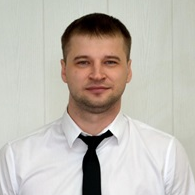Reinforced Concrete: Materials, Physical Properties and Applications
A special issue of Applied Sciences (ISSN 2076-3417). This special issue belongs to the section "Materials Science and Engineering".
Deadline for manuscript submissions: closed (15 March 2022) | Viewed by 53012
Special Issue Editors
Interests: mechanical properties; finite element analysis; structural analysis; structural dynamics; finite element modeling; mechanical behavior of materials; mechanical testing construction; construction engineering mechanics of materials
Special Issues, Collections and Topics in MDPI journals
Interests: semiconductor; energy; experimental physics; solid state physics; density functional theory; materials
Special Issues, Collections and Topics in MDPI journals
Interests: technology and organization of construction; technology and products from heavy and cellular concrete; quality control; technology and organization of testing of building materials and products; legislation and regulatory and technical documentation in construction
Special Issues, Collections and Topics in MDPI journals
Interests: building constructions; buildings; structures; materials; products of heavy and aerated concrete; specifications and technical documentation in the construction and quality control in construction
Special Issues, Collections and Topics in MDPI journals
Special Issue Information
Dear Colleagues,
Reinforced concrete continues to be the most widely spread material in the construction field. Modern trends in civil engineering pose new challenges in optimizing structures, introducing energy-efficient technologies, creating comfortable conditions for a person's stay. This special issue is aimed at solving urgent problems in the field of innovative methods for the manufacture of reinforced concrete, the use of new materials and technologies, application of modern calculation methods. Papers are invited in which urgent problems of the use of new materials, concrete manufacturing technologies, non-destructive testing methods, determination of physical properties, and new applications are considered. Moreover, articles are welcomed that discuss related processes, modeling the behavior of reinforced concrete structures under unsteady influences, and the use of artificial intelligence algorithms. Case studies describing real-world applications of new technologies are also very welcome.
Prof. Dr. Alexey Beskopylny
Prof. Dr. Anatoly Lavrentyev
Dr. Evgenii Shcherban
Dr. Sergei Stel’makh
Guest Editors
Manuscript Submission Information
Manuscripts should be submitted online at www.mdpi.com by registering and logging in to this website. Once you are registered, click here to go to the submission form. Manuscripts can be submitted until the deadline. All submissions that pass pre-check are peer-reviewed. Accepted papers will be published continuously in the journal (as soon as accepted) and will be listed together on the special issue website. Research articles, review articles as well as short communications are invited. For planned papers, a title and short abstract (about 100 words) can be sent to the Editorial Office for announcement on this website.
Submitted manuscripts should not have been published previously, nor be under consideration for publication elsewhere (except conference proceedings papers). All manuscripts are thoroughly refereed through a single-blind peer-review process. A guide for authors and other relevant information for submission of manuscripts is available on the Instructions for Authors page. Applied Sciences is an international peer-reviewed open access semimonthly journal published by MDPI.
Please visit the Instructions for Authors page before submitting a manuscript. The Article Processing Charge (APC) for publication in this open access journal is 2400 CHF (Swiss Francs). Submitted papers should be well formatted and use good English. Authors may use MDPI's English editing service prior to publication or during author revisions.
Keywords
- Reinforced concrete
- Energy-efficient technologies
- Structural modeling
- Reinforced concrete manufacturing
- Non-destructive testing
- Physical properties determination








